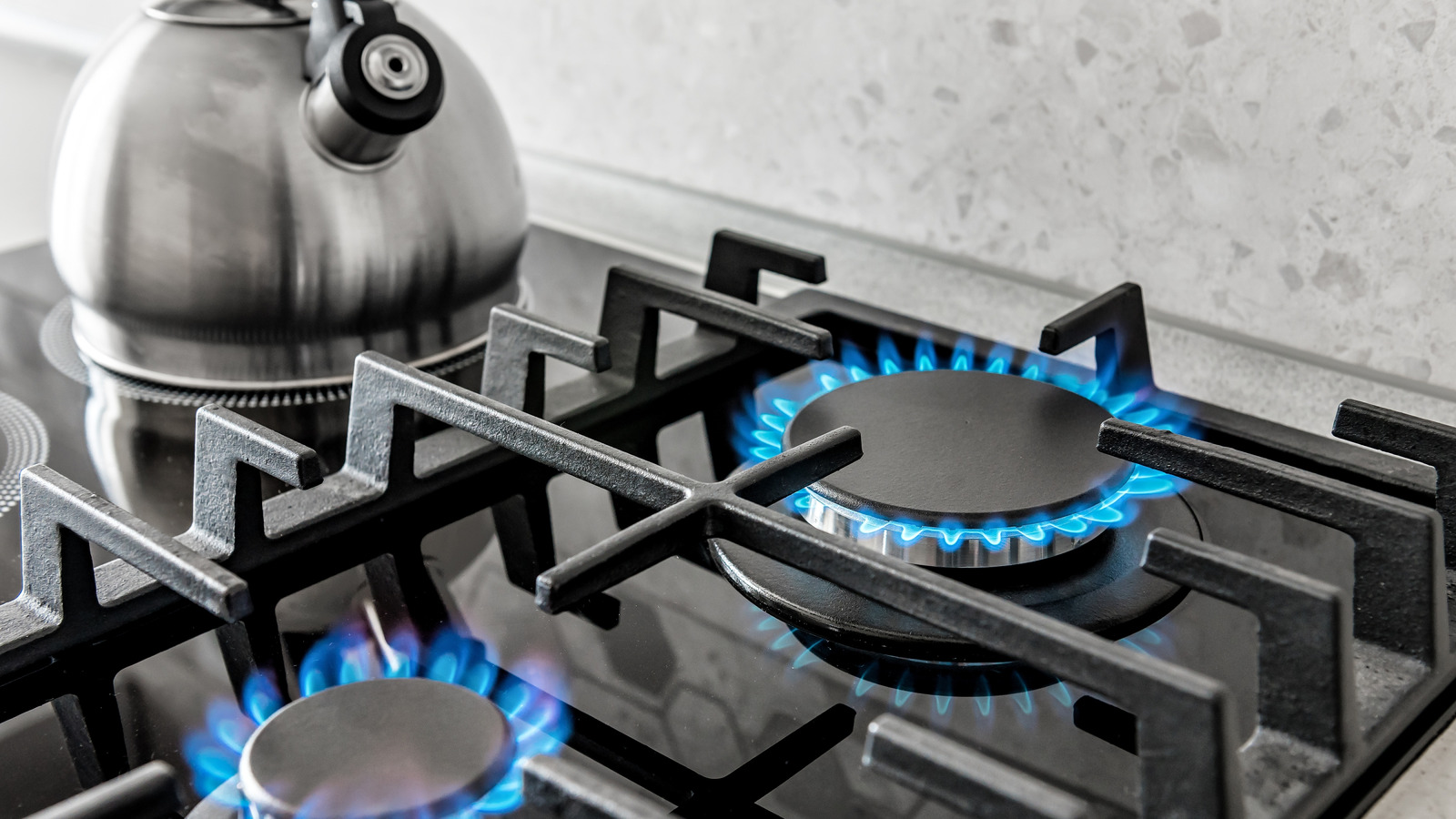
"Continually cooking over orange flames in your kitchen poses a potential safety risk. Since carbon monoxide is very hard to detect and poses a health risk, you'll want to make sure this doesn't happen frequently. In addition, that sooty buildup can make a mess of your pots and pans, as well as the area around your stove, including the backsplash, walls, and vent. One meal cooked on an orange flame won't cause too much trouble, according to Feltis, but you shouldn't let it continue for long."
"A problem with the mix of gas and air, or poor gas pressure, can lead to orange and yellow flames. The methane gas, which is what burns bright blue normally, is not burning completely. These orange flames produce a lot of soot and, at the same time, increase carbon monoxide in your home due to that incomplete burn. Because toxic carbon monoxide is odorless, its presence can be very dangerous, so the issue should be fixed as soon as possible."
Flame color on a gas stovetop indicates combustion quality. A blue flame signifies proper burning and control. Orange or yellow flames indicate incomplete combustion, producing soot that soils pots, pans, and surrounding kitchen surfaces. Repeated orange flames increase carbon monoxide levels because methane is not burning completely. Carbon monoxide is odorless and poses a serious health risk, so frequent orange flames should be addressed promptly. Causes of orange flames include an incorrect gas-to-air mix or poor gas pressure. Occasional orange flames may not be disastrous, but persistent issues require correction to protect safety and cleanliness.
Read at Tasting Table
Unable to calculate read time
Collection
[
|
...
]